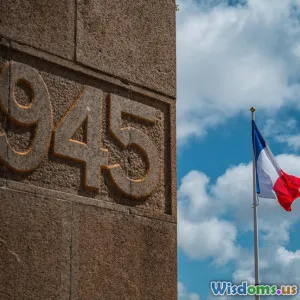
Mysteries of Ancient Texts: A Linguistic Approach
6 min read Explore how linguistics unlocks the secrets behind ancient texts, revealing lost civilizations and untold histories. (0 Reviews)
Mysteries of Ancient Texts: A Linguistic Approach
Introduction
From sun-bleached tablets etched in cuneiform to fragile papyri hidden beneath desert sands, ancient texts hold the keys to civilizations that predate modern memory. Yet, many of these writings remain enigmatic, tantalizing scholars and readers alike. How do linguists unravel these cryptic puzzles? What does a linguistic perspective reveal about the messages penned millennia ago? This article embarks on a journey to explore the mysteries of ancient texts through the lens of linguistics, blending archaeology, language science, and cultural history to illuminate the past.
Decoding the Language of the Ancient World
The Challenge of Ancient Scripts
Ancient texts come in diverse scripts—some deciphered, some partially understood, and others completely undeciphered. The Rosetta Stone, discovered in 1799, was pivotal in enabling scholars to unlock Egyptian hieroglyphs by comparing trilingual inscriptions. However, without such linguistic twins, many scripts pose profound puzzles.
Take the Indus Script, used by the Harappan civilization around 2600–1900 BCE. Despite numerous attempts, it remains untranslatable due to the absence of bilingual texts and unclear linguistic affiliation. In such cases, the linguistic approach requires innovative methods: pattern recognition, computational models, and cross-cultural comparisons.
Linguistics Meets Technology: Computational Decipherment
Advances in artificial intelligence have brought new hope for deciphering scripts like Linear A (Minoan civilization) and Rongorongo (Easter Island). Algorithms analyze symbol frequency, contextual patterns, and compare these with known languages to hypothesize possible phonetic or semantic meanings.
For example, a 2018 study used machine learning to analyze the relationship between symbols in the Indus Script, suggesting that it could represent a papal-like syllabic script. Such computational linguistics provide data-driven frameworks, supplementing traditional philological methods.
Linguistic Clues to Cultural and Historical Contexts
Loanwords and Language Contact
Ancient texts also reveal histories of cultural interactions through loanwords and hybrid syntaxes. The Amarna Letters, diplomatic correspondence from the 14th century BCE, demonstrate this: written mostly in Akkadian cuneiform but interspersed with Canaanite vocabularies, they evidence political and commercial mingling.
In deciphering language contact zones, linguists help reconstruct trade routes, alliances, and migrations. The presence of Persian words in Aramaic documents, for instance, reflects the Achaemenid Empire's influence.
Understanding Religious and Mythological Evolution
Linguistic analysis of texts such as the Vedas, Sumerian myths, or Egyptian funerary texts illuminates evolving belief systems. By tracing etymological connections, scholars discern how deities, rituals, and cosmologies adapted across cultures.
The study of the Epic of Gilgamesh’s Akkadian and Sumerian versions showed not just literary borrowing but shifts in worldview and political ideology embedded in linguistic choices.
The Role of Context in Interpretation
Material Culture and Script Medium
The physical form of texts often informs their interpretation. For instance, inscriptions on durable materials like stone suggest official or monumental messaging, while papyrus scrolls might indicate administrative or personal records.
Moreover, decipherment benefits from archaeological context; an uncertain symbol could signify different things based on the object's location or associated artifacts. The Dead Sea Scrolls’ linguistic style reflects Jewish sectarianism nuances unknown without understanding Hebrew and Aramaic dialects of the era.
Multidisciplinarity: A Collaborative Codebreaking
Ultimately, linguistic approaches thrive when integrated with archaeology, anthropology, and history. The decipherment of Linear B tablets, discovered at Pylos, was possible thanks to Michael Ventris’s linguistic talent alongside archaeological insights about Mycenaean Greece.
Similarly, interdisciplinary analyses uncover social hierarchies and economic systems hidden within legal codes or administrative lists, painting comprehensive pictures of ancient societies.
Conclusion
Ancient texts are much more than silent remnants; they are vibrant dialogues frozen in time. Linguistics opens the door to these dialogues, enabling us to hear the voices of the distant past. From decrypting undeciphered scripts with AI to tracing cultural exchanges through language, the linguistic approach enriches our understanding of history's mysteries. As technology evolves and interdisciplinary collaborations deepen, we stand at the threshold of uncovering even more secrets encoded within ancient writing—reminding us that every symbol silently carries stories waiting to be told.
References
- Robinson, Andrew. Lost Languages: The Enigma of the World's Undeciphered Scripts. Thames & Hudson, 2002.
- Powell, Barry B. Writing: Theory and History of the Technology of Civilization. Wiley-Blackwell, 2009.
- Parpola, Simo. "The Indus Script and Its Decipherment". Archaeological Review, 2018.
- Ventris, Michael & Chadwick, John. Documents in Mycenaean Greek. Cambridge University Press, 1973.
Unlocking ancient languages will continue to reshape our understanding of human heritage, inviting both scholars and enthusiasts to journey into the depth of time through words.
Rate the Post
User Reviews
Popular Posts



















